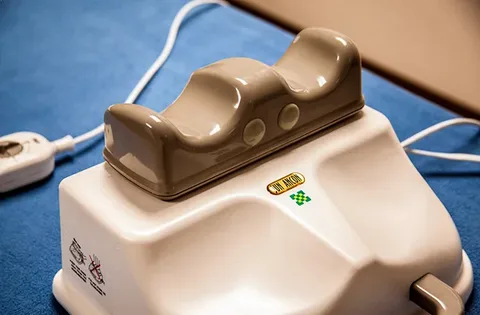Stretch marks are a common concern for many people. These marks appear when the skin stretches rapidly due to factors like pregnancy, weight gain, or growth spurts. While they are harmless, many individuals seek ways to reduce their appearance. Stretch mark removal treatments offer effective solutions to restore the skin’s smoothness and improve confidence.
Understanding Stretch Marks
Stretch marks, also known as striae, form when the skin expands or contracts quickly. This sudden change causes the collagen and elastin fibers to rupture, leading to visible streaks on the skin. Initially, they appear red, purple, or dark brown, depending on skin tone. Over time, they fade into lighter, silvery lines.
Stretch marks commonly develop on areas like the abdomen, thighs, hips, breasts, and arms. They are more prevalent in pregnant women, bodybuilders, and teenagers experiencing rapid growth. While they are not harmful, many people look for ways to reduce their visibility.
Causes of Stretch Marks
Rapid weight fluctuations, pregnancy, puberty, and hormonal changes contribute to stretch mark formation. Genetics also play a role in determining who is more prone to developing them. When the skin lacks elasticity, it becomes more susceptible to tearing under pressure. Once stretch marks appear, they do not completely disappear on their own.
Certain medical conditions, such as Cushing’s syndrome or Marfan syndrome, can also lead to stretch marks. Long-term use of corticosteroid creams can weaken the skin’s elasticity, increasing the likelihood of developing these marks. Understanding the causes helps individuals take preventive measures and seek the right treatment.
Stretch Mark Removal Treatments
Various treatment options help reduce the appearance of stretch marks. While complete removal is challenging, these methods significantly improve skin texture and tone. The effectiveness of treatment depends on the severity, age, and location of the stretch marks.
Topical creams containing ingredients like retinol, hyaluronic acid, and vitamin C promote collagen production and improve skin elasticity. Prescription treatments with stronger retinoids help stimulate cell turnover, making stretch marks less noticeable. Regular application enhances skin regeneration and fades marks over time.
Laser therapy is another effective solution. It stimulates collagen production by targeting the affected area with focused light energy. Different laser types treat various skin tones and stretch mark stages. Fractional laser treatments work well for newer marks, while pulsed dye lasers help fade older, more stubborn lines.
Microdermabrasion and Chemical Peels
Microdermabrasion involves exfoliating the skin’s surface to encourage new cell growth. This treatment removes dead skin layers, making stretch marks appear less prominent. Multiple sessions improve skin texture and stimulate collagen production.
Chemical peels use acid-based solutions to remove damaged skin layers. Glycolic acid and trichloroacetic acid peels help fade stretch marks by promoting new skin growth. Regular treatments improve skin tone and reduce discoloration. Both procedures require professional application to ensure safety and effectiveness.
Microneedling for Stretch Mark Removal
Microneedling is a minimally invasive treatment that enhances skin healing. Tiny needles create micro-injuries in the skin, triggering collagen and elastin production. As the skin repairs itself, stretch marks fade, and overall skin texture improves. This procedure is effective for both old and new stretch marks.
Platelet-rich plasma (PRP) therapy enhances microneedling results. PRP, derived from the patient’s blood, contains growth factors that accelerate healing. When combined with microneedling, it promotes faster skin regeneration and greater stretch mark reduction.
Natural Remedies and Home Treatments
Natural remedies can help improve skin hydration and elasticity. Cocoa butter, shea butter, and coconut oil nourish the skin, keeping it moisturized and supple. Regular massage with essential oils like rosehip or almond oil enhances circulation and promotes skin healing.
Aloe vera soothes the skin and reduces inflammation. Applying fresh aloe gel to stretch marks hydrates the skin and supports cell regeneration. Drinking plenty of water and maintaining a balanced diet with vitamins A, C, and E also strengthens skin health and reduces the likelihood of developing new stretch marks.
Preventing Stretch Marks
Prevention plays a crucial role in minimizing stretch mark formation. Keeping the skin hydrated and well-nourished enhances its elasticity. Using moisturizers with hyaluronic acid and collagen-boosting ingredients strengthens the skin’s barrier.
Gradual weight changes reduce stress on the skin. Sudden weight gain or loss increases the risk of stretch marks. Maintaining a stable weight through a healthy diet and regular exercise supports skin health. Pregnant women can use specialized creams to keep the skin moisturized and prevent excessive stretching.
Professional Stretch Mark Removal Procedures
For severe stretch marks, professional treatments offer the most effective solutions. Dermatologists provide customized treatment plans based on skin type and stretch mark severity. Combination therapies, such as laser treatments with microneedling, yield better results.
Surgical options, like abdominoplasty (tummy tuck), remove excess skin along with stretch marks. This procedure is suitable for individuals with significant skin laxity after pregnancy or weight loss. While surgery provides permanent results, it requires a longer recovery period and is only recommended for extreme cases.
Cost of Stretch Mark Removal
The cost of treatment varies depending on the method chosen. Topical creams and home remedies are the most affordable options, ranging from $20 to $100. Professional treatments, such as laser therapy and microneedling, range from $200 to $1,500 per session. Surgical procedures can cost several thousand dollars but provide more permanent solutions.
Many clinics offer financing plans to make stretch mark removal treatments accessible. Consulting a dermatologist helps determine the best option based on budget and desired results.
Psychological Impact of Stretch Marks
Stretch marks affect self-confidence, especially in individuals who feel self-conscious about their appearance. While they are a natural part of skin changes, some people struggle with body image issues. Treating stretch marks boosts confidence and allows individuals to feel comfortable in their skin.
Many people embrace their stretch marks as a part of their journey. Social movements promoting body positivity encourage self-acceptance. However, for those who wish to reduce their appearance, stretch mark removal treatments provide an effective solution.
Choosing the Right Stretch Mark Removal Treatment
Selecting the right treatment depends on individual goals and skin condition. Newer stretch marks respond better to topical treatments, while older ones may require laser therapy or microneedling. Consulting a skincare professional ensures the best approach for optimal results.
Consistency is key in achieving noticeable improvements. Treatments take time, and results vary based on skin type and severity. Combining professional treatments with a healthy skincare routine enhances outcomes and promotes long-term skin health.
Conclusion
Stretch mark removal offers various solutions to improve skin appearance and boost confidence. From topical treatments and laser therapy to micro needling and chemical peels, effective options exist for reducing stretch marks. Preventative measures, such as hydration and gradual weight changes, help minimize their formation. Consulting a specialist ensures the best treatment approach for achieving smooth, healthy skin.
For those looking to enhance their skin’s appearance, stretch mark removal treatments provide a pathway to regaining confidence and feeling comfortable in their skin. With advancements in dermatology, achieving noticeable results has never been more accessible. for blog to visit our site guestpost.











































